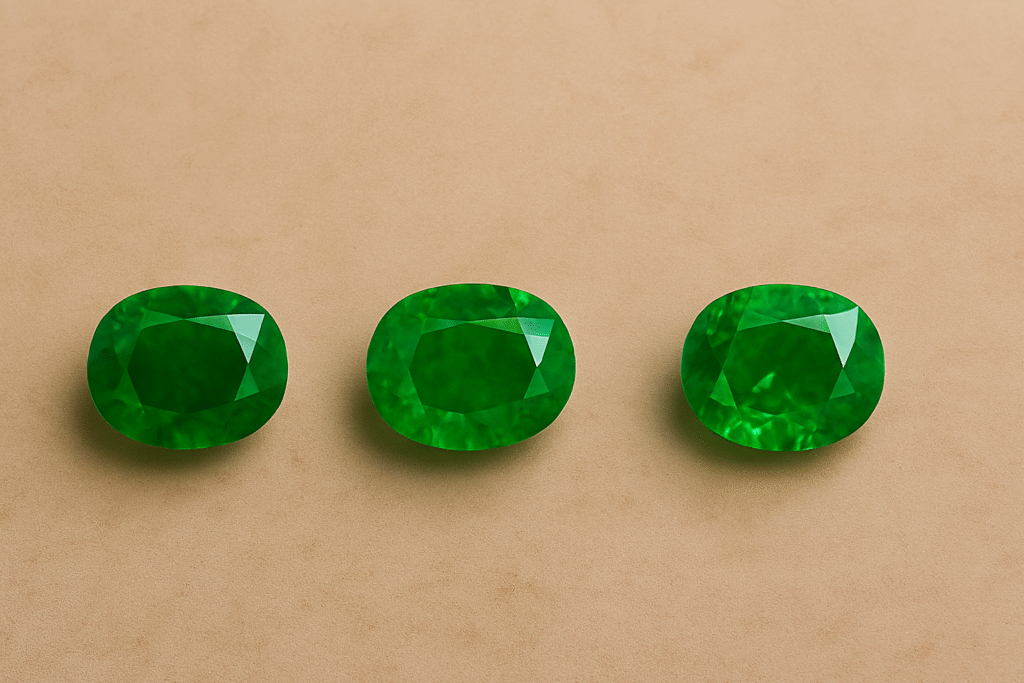Learn the difference between natural, synthetic, and imitation gemstones. Avoid costly mistakes by asking the right question before you buy.
Natural, Synthetic, or Imitation?
When you walk into a jewelry store, every stone looks tempting. But do you know if it’s natural, synthetic, or imitation?
This single question can protect your wallet and guide your choices.
Natural Gemstones
- Formed in the earth over millions of years
- Value depends on rarity, beauty, and condition
- Examples: ruby, sapphire, emerald, diamond
When you pay for a natural stone, you’re paying for scarcity and history.
Synthetic Gemstones
- Created in a lab but with the same chemical makeup as natural stones
- Look almost identical to their natural counterparts
- Often sold at a lower price
- Examples: lab-grown ruby, sapphire, diamond
They are real gemstones, but not mined from the earth.
Imitation Gemstones
- Made from glass, plastic, or other materials to copy the look
- Do not share the same chemistry or durability as the original stone
- Examples: glass imitating emerald, cubic zirconia imitating diamond
An imitation might sparkle today, but it won’t hold long-term value.
Why This Matters for You
- A natural ruby could cost thousands. A synthetic one may cost a fraction. An imitation might cost only a few dollars.
- Without asking, you might assume every stone is natural and overpay.
- Certification from trusted labs like GIA, IGI, or SSEF can confirm what you are buying.
The Question to Always Ask
When buying, look the seller in the eye and ask:
“Is this natural, synthetic, or imitation?”
Your money, your choice, your clarity.
Practical Tip
If you only want beauty and budget matters, a synthetic might be perfect.
If you want rarity and long-term value, choose natural with certification.
If you want a fashion piece, an imitation could work—just don’t pay natural prices.
This post explains the difference between natural, synthetic, and imitation gemstones. It shows how each type is made, their value, and why asking the right question protects you from costly mistakes.


